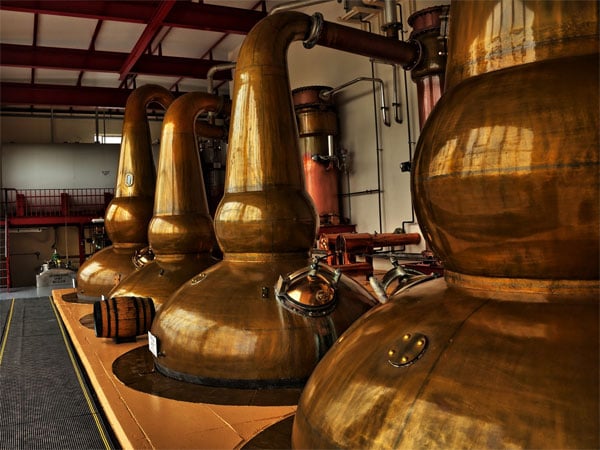If there is one thing you can’t accuse the Scotch whisky industry of being, it’s static.
Interestingly, the industry markets itself on holding steadfast to time honoured traditions, and yet it has never been more dynamic and innovative. Things are always changing, including the very business of owning, selling, opening and closing distilleries.
Corporate mergers, takeovers and buyouts have been a staple of the industry. Two centuries ago, most of the commercial distilleries were privately owned by individuals or small concerns. The rise of so-called ‘whisky barons’ with their successful self-named blends (Dewars, Haig, Walker etc) led to the formation of larger companies that acquired distilleries in order to guarantee a reliable supply.
Another factor in the upheaval during these times was the conflict between grain and malt distilleries, and, more accurately, Highland and Lowland distilleries. Taxes, excise, and supply were somewhat inequitable, depending on which side of the Highland line you sat.
To protect their interests, six Lowland grain distilleries grouped together in 1877, forming The Distillers Company, Limited (DCL). Similarly, five malt distilleries grouped together in 1915 to form Scottish Malt Distillers (SMD). In 1925, DCL bought SMD, thus forming a formidable force in the industry. DCL was eventually acquired by Guinness in 1986, becoming United Distillers, which in turn merged with Grand Metropolitan in 1997 to form Diageo, the biggest drinks company on the planet. Today, Diageo owns approximately thirty of Scotland’s distilleries, nearly a third of all the malt & grain distilleries, ì as well as, obviously, the brands that utilise those distilleries (e.g. Johnnie Walker, Bells, J&B Rare, etc).
In the meantime, other groups grew, particularly from the 1960s. Chivas Brothers became part of the Seagram group, which was subsequently swallowed by Pernod Ricard, who today owns just under twenty of Scotland’s distilleries. Other giants, such as Edrington, Whyte & Mackay, Bacardi, and William Grant & Sons, all own between four and six distilleries each.
So how do the small guys survive in the land of the giants? Pretty well, actually! There are still a handful of distilleries that are more or less independent or in the hands of small concerns. Glenfarclas and Springbank are just some examples of long-established yet singularly-owned distilleries that still make big statements on the global stage. At the younger end of the spectrum, Arran, which opened only as recently as 1995, and Kilchoman (2005), have made great footholds in the market, despite producing on a small scale. The current boom in whisky is encouraging many individuals and teams to start up their own boutique distilleries: new (or restored) distilleries in their fledgling stages include Annandale (Lowlands), Abhainn Dearg (Isle of Lewis), and Kingsbarn (near St. Andrews)
No one is pretending these small distilleries will take on the giants, nor are their owners planning on making it rich any time soon. However, for the whisky enthusiast, every distillery, whether large or small, is yet another producer and source of single malt, and is thus something to be respected and cherished!








